Interference of Spread-Spectrum EMI and Digital Data Links under Narrowband Resonant Coupling
Abstract
1. Introduction
2. Communication Channel Modeling under Resonant EMI Coupling
2.1. Channel Modelling
2.2. Modelling of a Communication Channel Affected by EMI
2.3. Resonant Coupling Modeling
3. EMI-Induced Channel Capacity Loss
4. Discussion
5. Impact of Spread Spectrum Modulations in a 4-QAM Channel under Resonant EMI Coupling
Test Setup
6. Conclusions
Author Contributions
Funding
Conflicts of Interest
References
- Dhia, S.B.; Ramdani, M.; Sicard, E. Electromagnetic Compatibility of Integrated Circuits: Techniques for Low Emission and Susceptibility; Springer: New York, NY, USA, 2006. [Google Scholar]
- Archambeault, B.; Ruehli, A.E. Analysis of power/ground-plane EMI decoupling performance using the partial-element equivalent circuit technique. IEEE Trans. Electromagn. Compatibil. 2001, 43, 437–445. [Google Scholar] [CrossRef]
- Shringarpure, K.; Pan, S.; Kim, J.; Fan, J.; Achkir, B.; Archambeault, B.; Drewniak, J.L. Sensitivity Analysis of a Circuit Model for Power Distribution Network in a Multilayered Printed Circuit Board. IEEE Trans. Electromagn. Compatibil. 2017, 59, 1993–2001. [Google Scholar] [CrossRef]
- Kim, J.; Rotaru, M.D.; Baek, S.; Park, J.; Iyer, M.K.; Kim, J. Analysis of noise coupling from a power distribution network to signal traces in high-speed multilayer printed circuit boards. IEEE Trans. Electromagn. Compatibil. 2006, 48, 319–330. [Google Scholar] [CrossRef]
- Crovetti, P.S. Operational amplifier immune to EMI with no baseband performance degradation. Electron. Lett. 2010, 46, 209–210. [Google Scholar] [CrossRef]
- Redouté, J.; Richelli, A. A methodological approach to EMI resistant analog integrated circuit design. IEEE Electr. Comp. Mag. 2015, 4, 92–100. [Google Scholar] [CrossRef][Green Version]
- Villavicencio, Y.; Musolino, F.; Fiori, F. Electrical Model of Microcontrollers for the Prediction of Electromagnetic Emissions. IEEE Trans. Very Large Scale Integr. (VLSI) Syst. 2011, 19, 1205–1217. [Google Scholar] [CrossRef]
- ‘Code of Federal Regulations, Title 47, Chapter I, Subchapter A, Part 15, Subpart B: Unintentional Radiators’. Available online: https://www.ecfr.gov/ (accessed on 19 July 2018).
- Council Directive 89/336/EEC on the Approximation of the Laws of the Member States Relating to Electromagnetic Compatibility; Official Journal of the European Union, Technical Report L139/19; The Publications Office of the European Union: Luxembourg, 1989.
- CISPR 11:2015 Industrial, Scientific and Medical Equipment - Radio-Frequency Disturbance Characteristics—Limits and Methods of Measurement; IEC: Geneva, Switzerland, 2015.
- CISPR 14-1:2016 Electromagnetic Compatibility - Requirements for Household Appliances, Electric Tools and Similar Apparatus—Part 1: Emission; IEC: Geneva, Switzerland, 2016.
- Musolino, F.; Villavicencio, Y.; Fiori, F. Chip-Level Design Constraints to Comply With Conducted Electromagnetic Emission Specifications. IEEE Trans. Electromagn. Compatibil. 2012, 54, 1137–1146. [Google Scholar] [CrossRef]
- Crovetti, P.S.; Fiori, F.L. Efficient BEM-based substrate network extraction in silicon SoCs. Microelectron. J. 2008, 39, 1774–1784. [Google Scholar] [CrossRef]
- Lobsiger, Y.; Kolar, J.W. Closed-Loop di/dt and dv/dt IGBT Gate Driver. IEEE Trans. Power Electron. 2015, 30, 3402–3417. [Google Scholar] [CrossRef]
- Chung, H.; Hui, S.Y.R.; Tse, K.K. Reduction of power converter EMI emission using soft-switching technique. IEEE Trans. Electromagn. Compatibil. 1998, 40, 282–287. [Google Scholar] [CrossRef]
- Pareschi, F.; Rovatti, R.; Setti, G. EMI Reduction via Spread Spectrum in DC/DC Converters: State of the Art, Optimization, and Tradeoffs. IEEE Access 2015, 3, 2857–2874. [Google Scholar] [CrossRef]
- Lin, F.; Chen, D.Y. Reduction of power supply EMI emission by switching frequency modulation. IEEE Trans. Power Electron. 1994, 9, 132–137. [Google Scholar]
- Hardin, K.B.; Fessler, J.T.; Bush, D.R. Spread spectrum clock generation for the reduction of radiated emissions. In Proceedings of the IEEE Symposium on Electromagnetic Compatibility, Chicago, IL, USA, 22–26 August 1994; pp. 227–231. [Google Scholar]
- Chen, Y.; Ma, D.B. 15.7 An 8.3MHz GaN Power Converter Using Markov Continuous RSSM for 35dBμV Conducted EMI Attenuation and One-Cycle TON Rebalancing for 27.6dB VO Jittering Suppression. In Proceedings of the 2019 IEEE International Solid- State Circuits Conference—(ISSCC), San Francisco, CA, USA, 17–21 February 2019; pp. 250–252. [Google Scholar]
- De Martino, M.; De Caro, D.; Esposito, D.; Napoli, E.; Petra, N.; Strollo, A.G.M. A Standard-Cell-Based All-Digital PWM Modulator With High Resolution and Spread- Spectrum Capability. IEEE Trans. Circuits Syst. I Regul. Pap. 2018, 65, 3885–3896. [Google Scholar] [CrossRef]
- Jun, J.; Bae, S.; Lee, Y.; Kim, C. A Spread Spectrum Clock Generator With Nested Modulation Profile for a High-Resolution Display System. IEEE Trans. Circuits Syst. II Express Briefs 2018, 65, 1509–1513. [Google Scholar] [CrossRef]
- De Caro, D.; Tessitore, F.; Vai, G.; Imperato, N.; Petra, N.; Napoli, E.; Parrella, C.; Strollo, A.G. A 3.3 GHz Spread-Spectrum Clock Generator Supporting Discontinuous Frequency Modulations in 28 nm CMOS. IEEE J. Solid-State Circuits 2015, 50, 2074–2089. [Google Scholar] [CrossRef]
- Hwang, S.; Song, M.; Kwak, Y.; Jung, I.; Kim, C. A 3.5 GHz Spread-Spectrum Clock Generator With a Memoryless Newton-Raphson Modulation Profile. IEEE J. Solid-State Circuits 2012, 47, 1199–1208. [Google Scholar] [CrossRef]
- Spread Spectrum Clocking Using the CDCS502/503; Application Note SCAA103; Texas Instruments: Dallas, TX, USA, 2009.
- STM32 MCUs Spread-Spectrum Clock Generation Principles, Properties and Implementation; Application Note AN4850; STMicroelectronics: Geneva, Switzerland, 2016.
- R1275S Series, 30V, 2A, Synchronous PWM Step-Down DC/DC Converter; Ricoh Electronic Devices Co. Ltd.: Tokyo, Japan, 2018.
- Multiphase Oscillator with Spread Spectrum Frequency Modulation, Document LTC6902, Linear Technology. 2003. Available online: http://cds.linear.com/docs/en/datasheet/6902f.pdf (accessed on 19 December 2019).
- Callegari, S.; Rovatti, R.; Setti, G. Spectral properties of chaos-based FM signals: Theory and simulation results. IEEE Trans. Circuits Syst. I Fundament. Theory Appl. 2003, 50, 3–15. [Google Scholar] [CrossRef]
- Setti, G.; Balestra, M.; Rovatti, R. Experimental verification of enhanced electromagnetic compatibility in chaotic FM clock signals. In Proceedings of the 2000 IEEE International Symposium on Circuits and Systems (ISCAS), Geneva, CH, 28–31 May 2000; Volume 3, pp. 229–232. [Google Scholar]
- KTse, K.; Chung, H.S.; Hui, S.Y.R.; So, H.C. A comparative study of carrier-frequency modulation techniques for conducted EMI suppression in PWM converters. IEEE Trans. Ind. Electron. 2002, 49, 618–627. [Google Scholar]
- Lauder, D.; Moritz, J. Investigation into Possible Effects Resulting From Dithered Clock Oscillators on EMC Measurements and Interference to Radio Transmission Systems; Radiocommunications Agency: London, UK, March 2000.
- Hardin, K.; Oglesbee, R.A.; Fisher, F. Investigation into the interference potential of spread-spectrum clock generation to broadband digital communications. IEEE Trans. Electromagn. Compatibil. 2003, 45, 10–21. [Google Scholar] [CrossRef]
- Mukherjee, R.; Patra, A.; Banerjee, S. Impact of a Frequency Modulated Pulsewidth Modulation (PWM) Switching Converter on the Input Power System Quality. IEEE Trans. Power Electron. 2010, 25, 1450–1459. [Google Scholar] [CrossRef]
- Skinner, H.; Slattery, K. Why spread spectrum clocking of computing devices is not cheating. In Proceedings of the 2001 IEEE EMC International Symposium. Symposium Record. International Symposium on Electromagnetic Compatibility (Cat. No.01CH37161), Montreal, QC, Canada, 13–17 August 2001. [Google Scholar]
- Musolino, F.; Crovetti, P.S. Interference of Spread-Spectrum Switching-Mode Power Converters and Low-Frequency Digital Lines. In Proceedings of the 2018 IEEE International Symposium on Circuits and Systems (ISCAS), Florence, Italy, 27–30 May 2018; pp. 1–5. [Google Scholar]
- Matsumoto, Y.; Shimizu, T.; Murakami, T.; Fujii, K.; Sugiura, A. Impact of Frequency-Modulated Harmonic Noises From PCs on OFDM-Based WLAN Systems. IEEE Trans. Electromagn. Compatibil. 2007, 49, 455–462. [Google Scholar] [CrossRef]
- Musolino, F.; Crovetti, P.S. Interference of Spread-Spectrum Modulated Disturbances on Digital Communication Channels. IEEE Access 2019, 7, 158969–158980. [Google Scholar] [CrossRef]
- Shim, H.; Hubing, T.H. A closed-form expression for estimating radiated emissions from the power planes in a populated printed circuit board. IEEE Trans. Electromagn. Compatibil. 2006, 48, 74–81. [Google Scholar] [CrossRef]
- Zeeff, T.M.; Hubing, T.H. Reducing power bus impedance at resonance with lossy components. IEEE Trans. Adv. Pack. 2002, 25, 307–310. [Google Scholar] [CrossRef]
- Grassi, F.; Spadacini, G.; Marliani, F.; Pignari, S.A. Use of Double Bulk Current Injection for Susceptibility Testing of Avionics. IEEE Trans. Electromagn. Compatibil. 2008, 50, 524–535. [Google Scholar] [CrossRef]
- Crovetti, P.S.; Fiori, F. Distributed Conversion of Common-Mode Into Differential-Mode Interference. IEEE Trans. Microw. Theory Tech. 2011, 59, 2140–2150. [Google Scholar] [CrossRef]
- Crovetti, P.S. Finite Common-Mode Rejection in Fully Differential Nonlinear Circuits. IEEE Trans. Circuits Syst. II Express Briefs 2011, 58, 507–511. [Google Scholar] [CrossRef]
- Shannon, C.E. A Mathematical Theory of Communication. Bell Syst. Tech. J. 1948, 27, 379–423. [Google Scholar] [CrossRef]
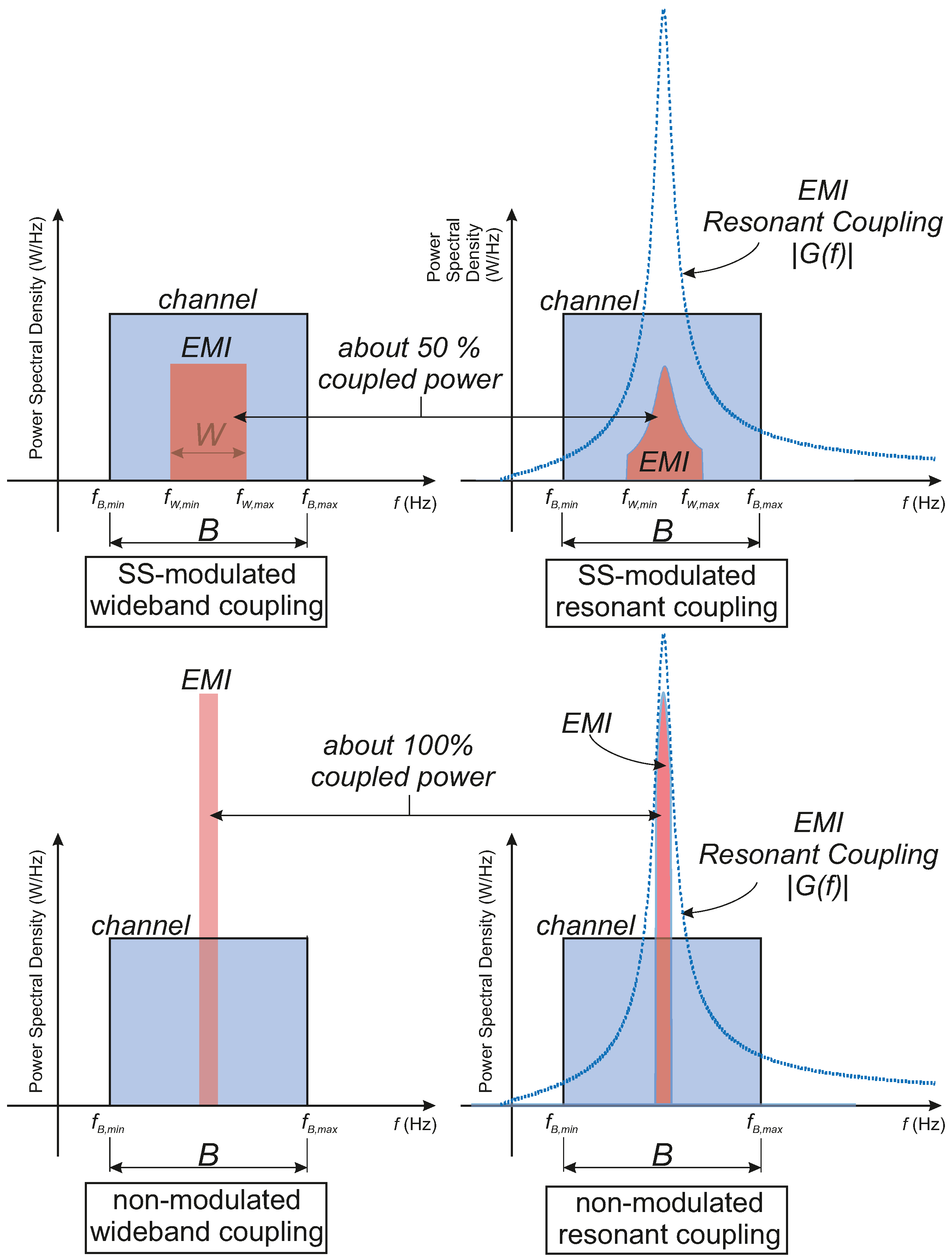
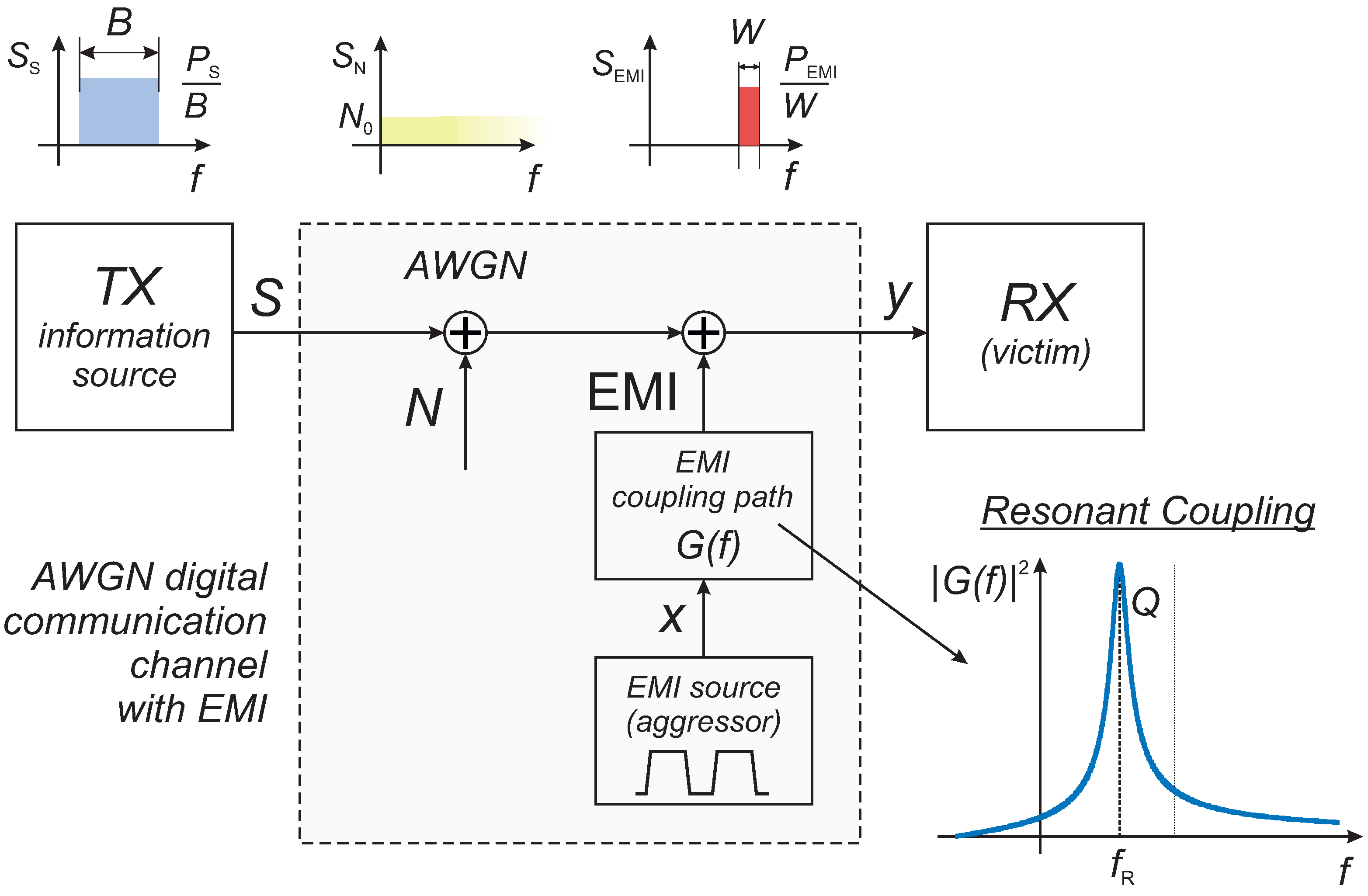
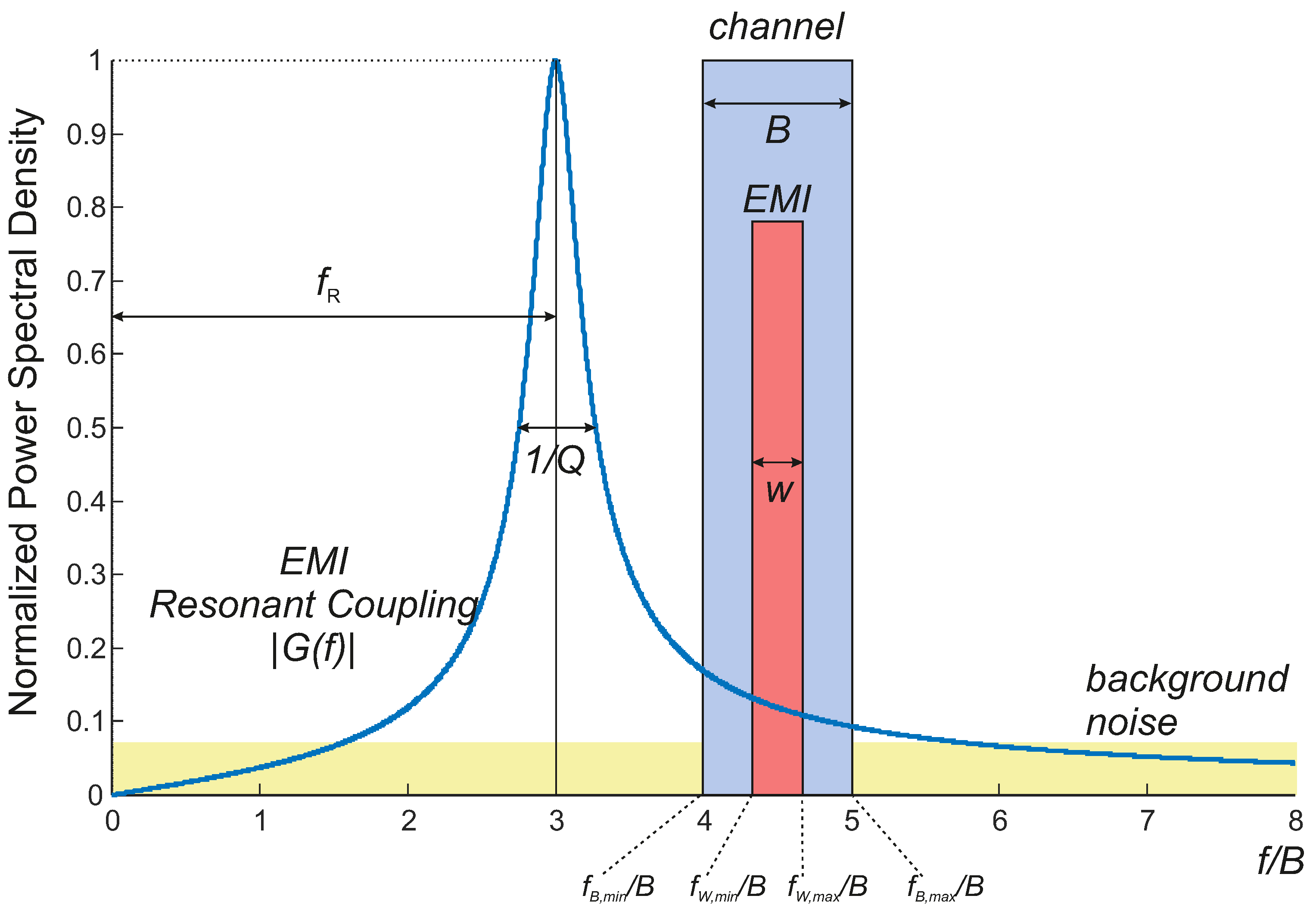
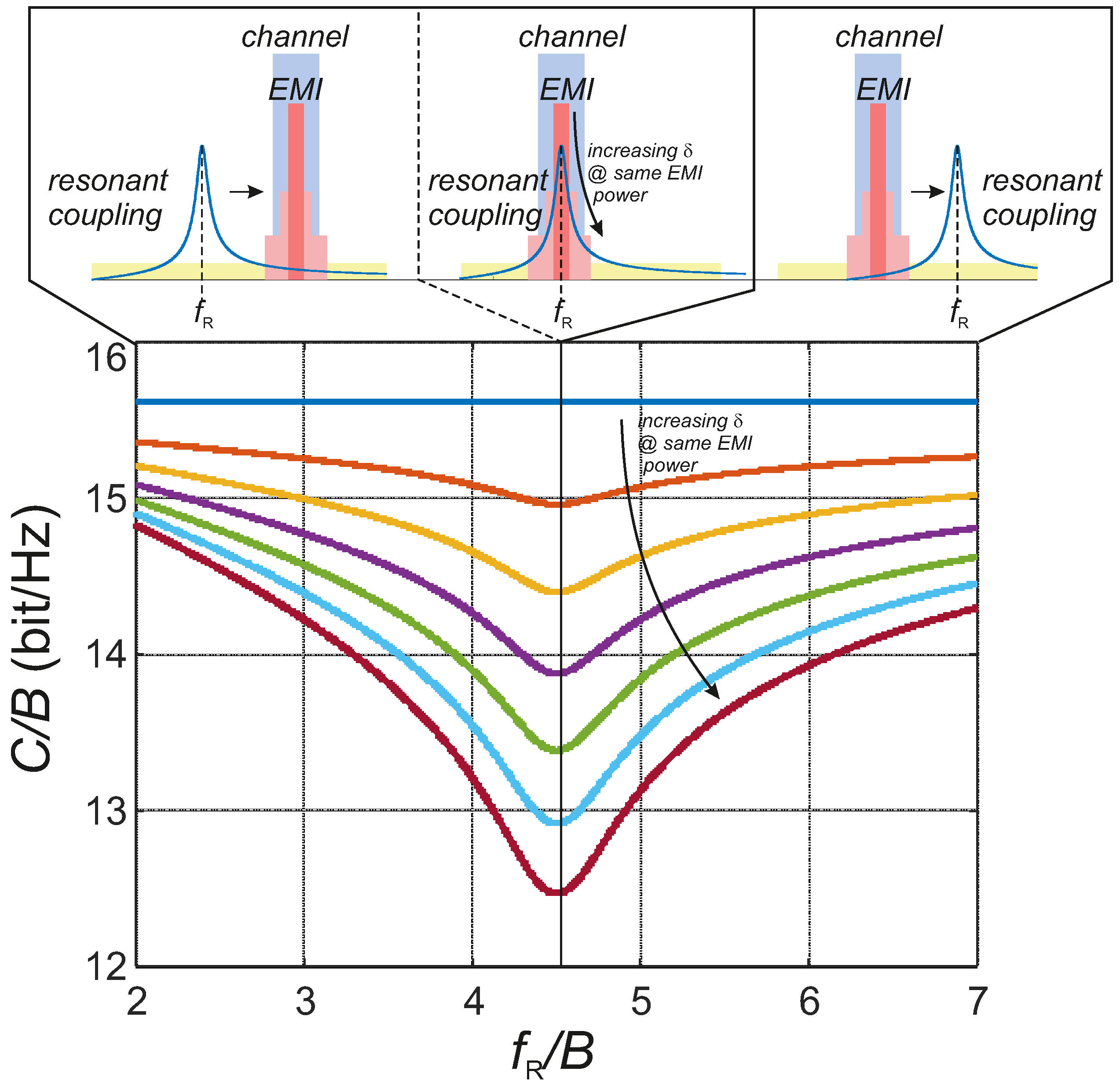
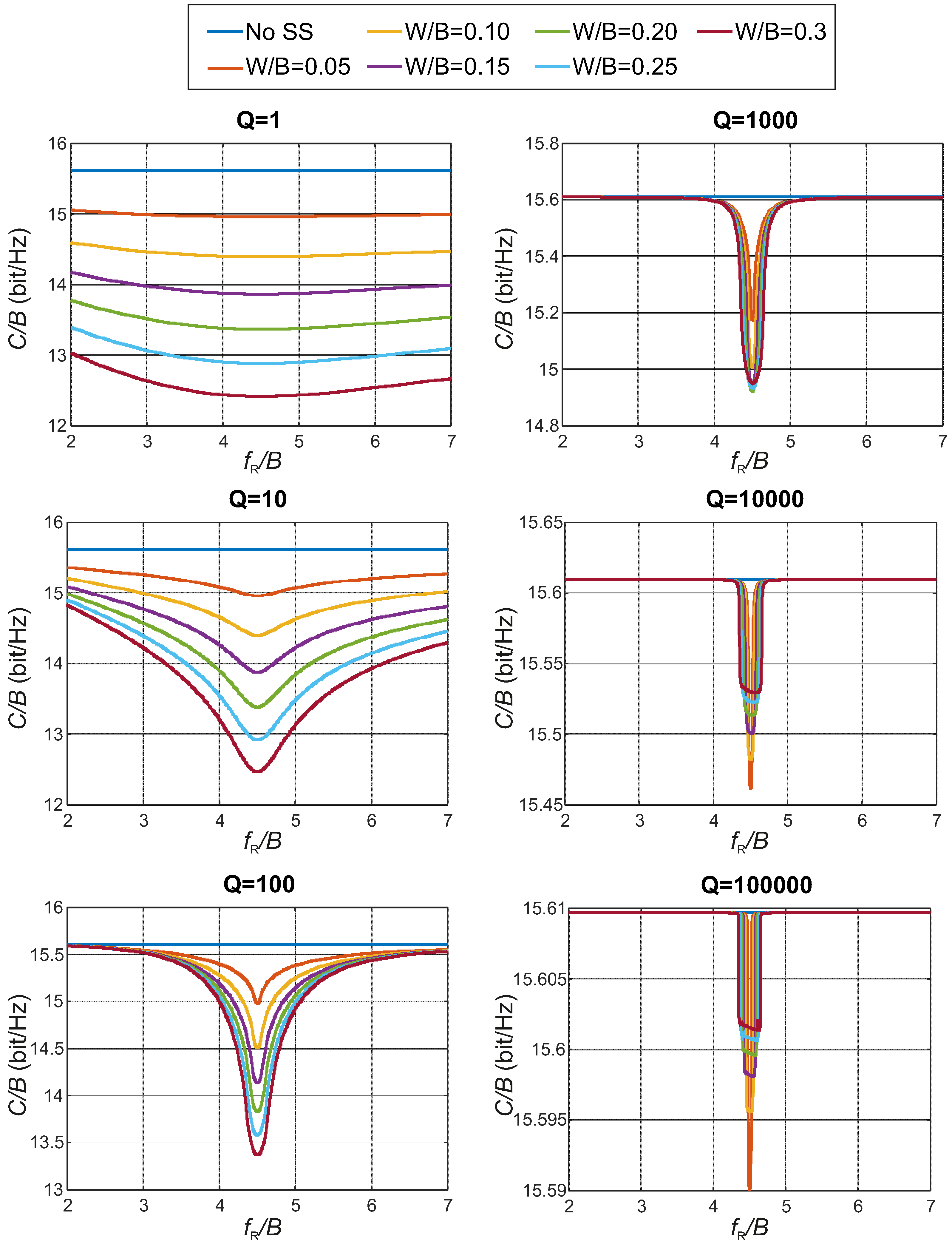

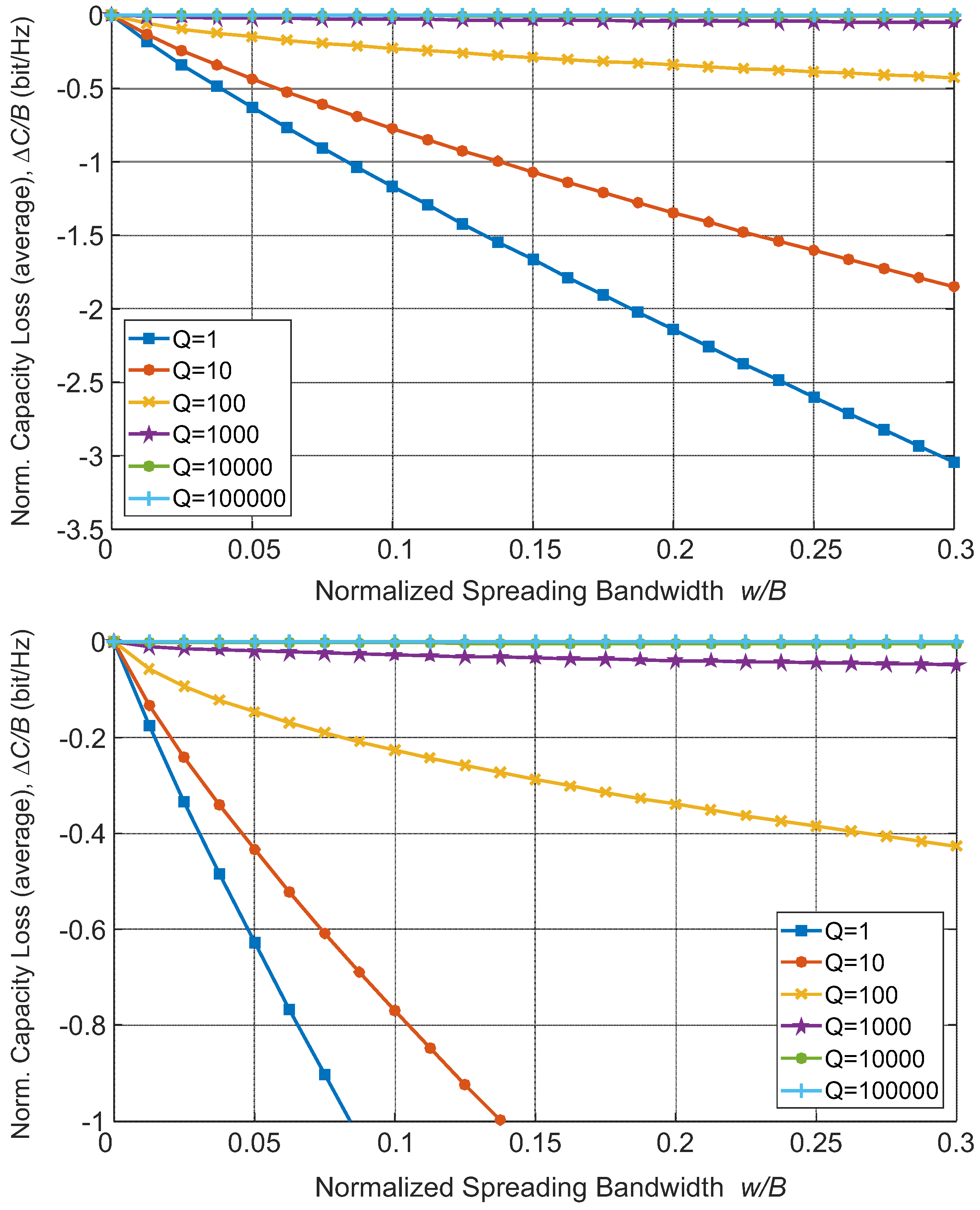
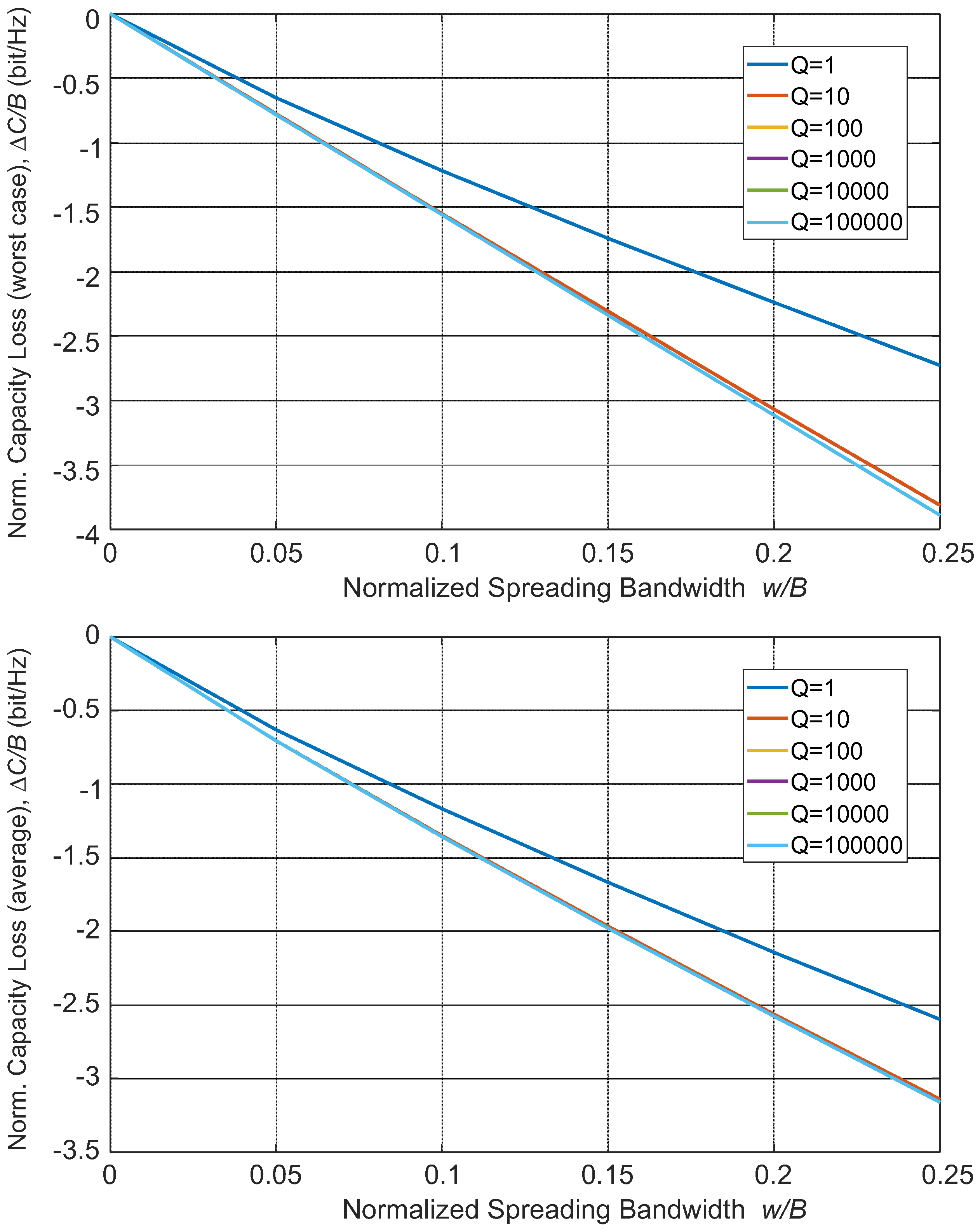
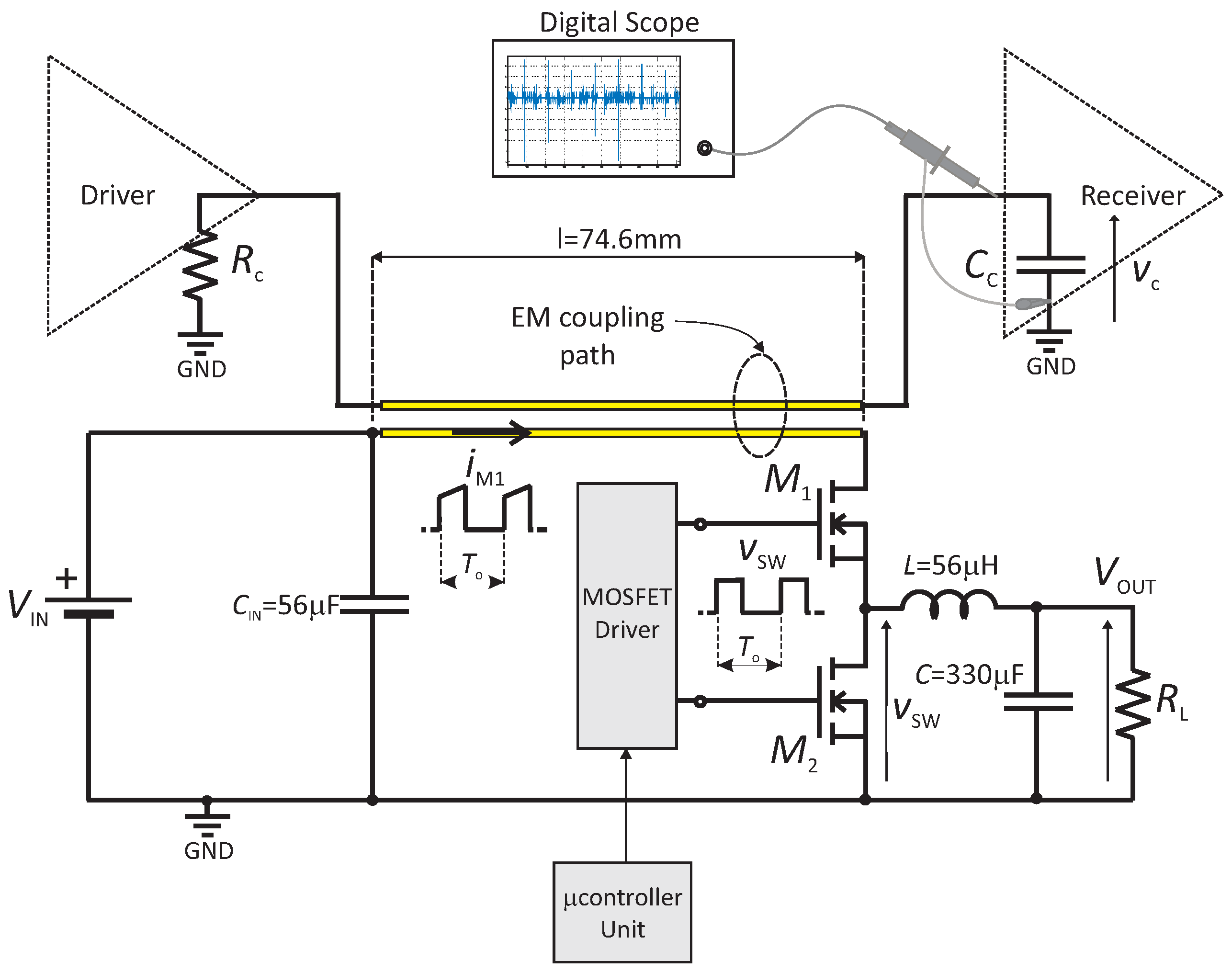
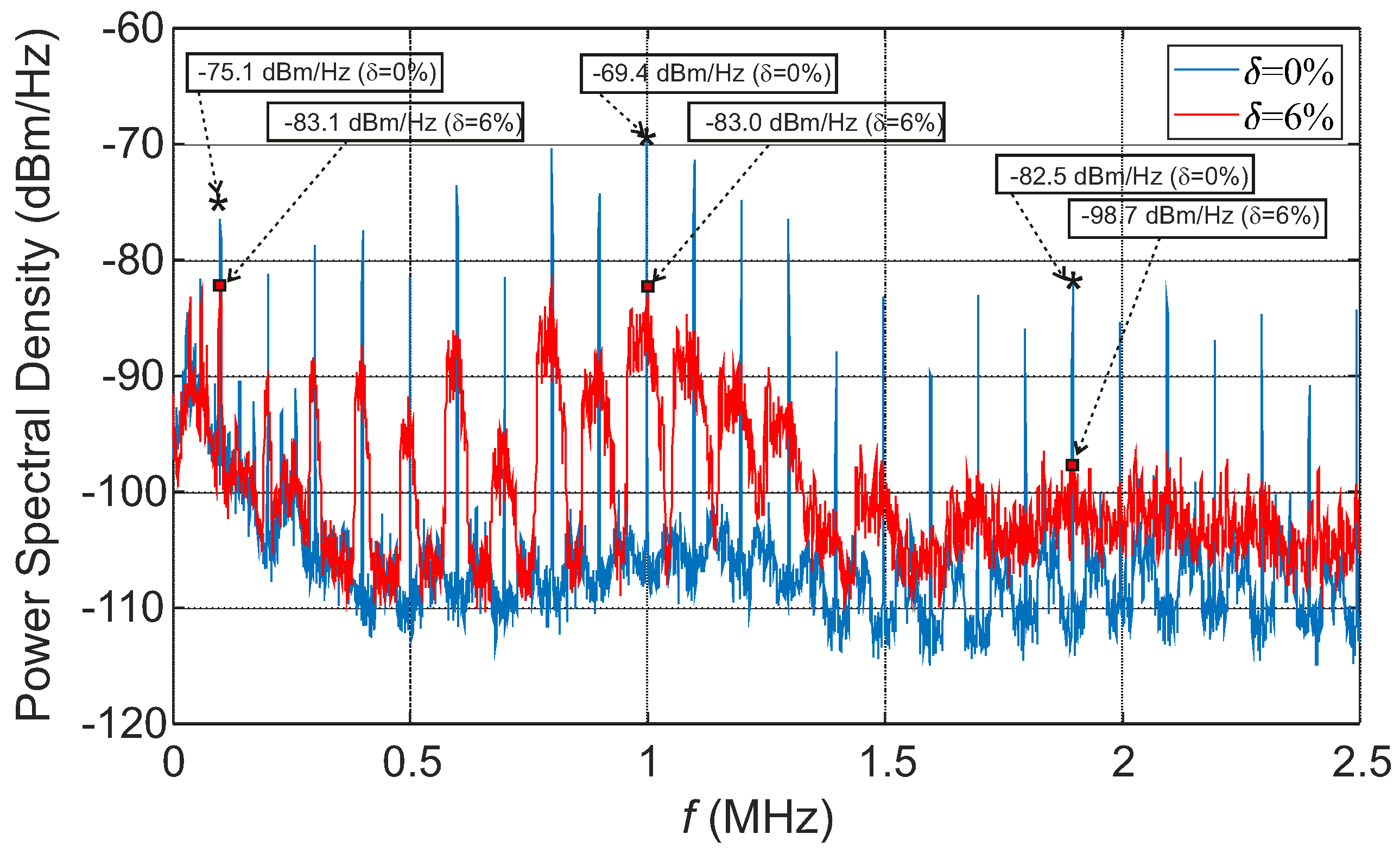
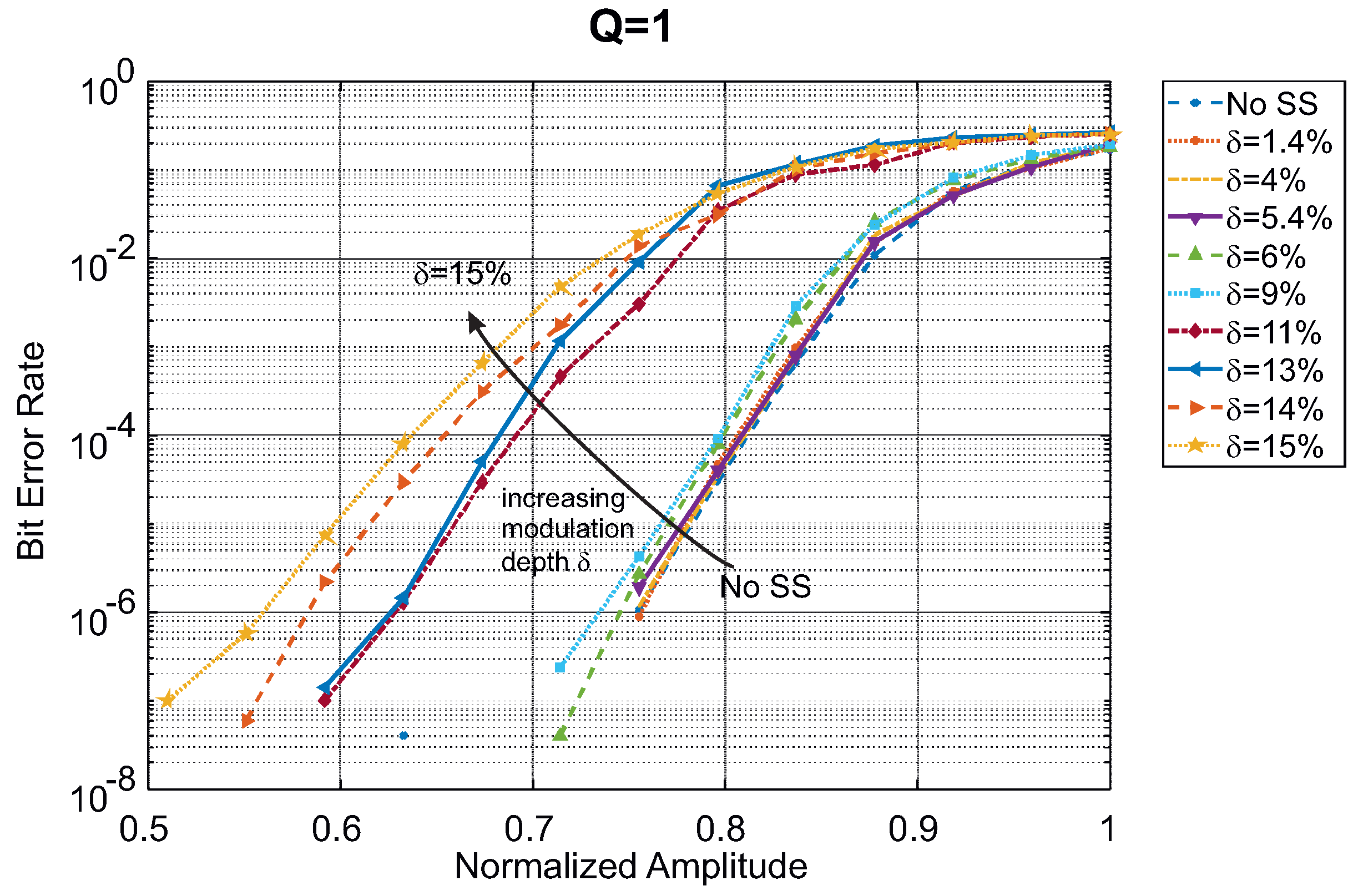

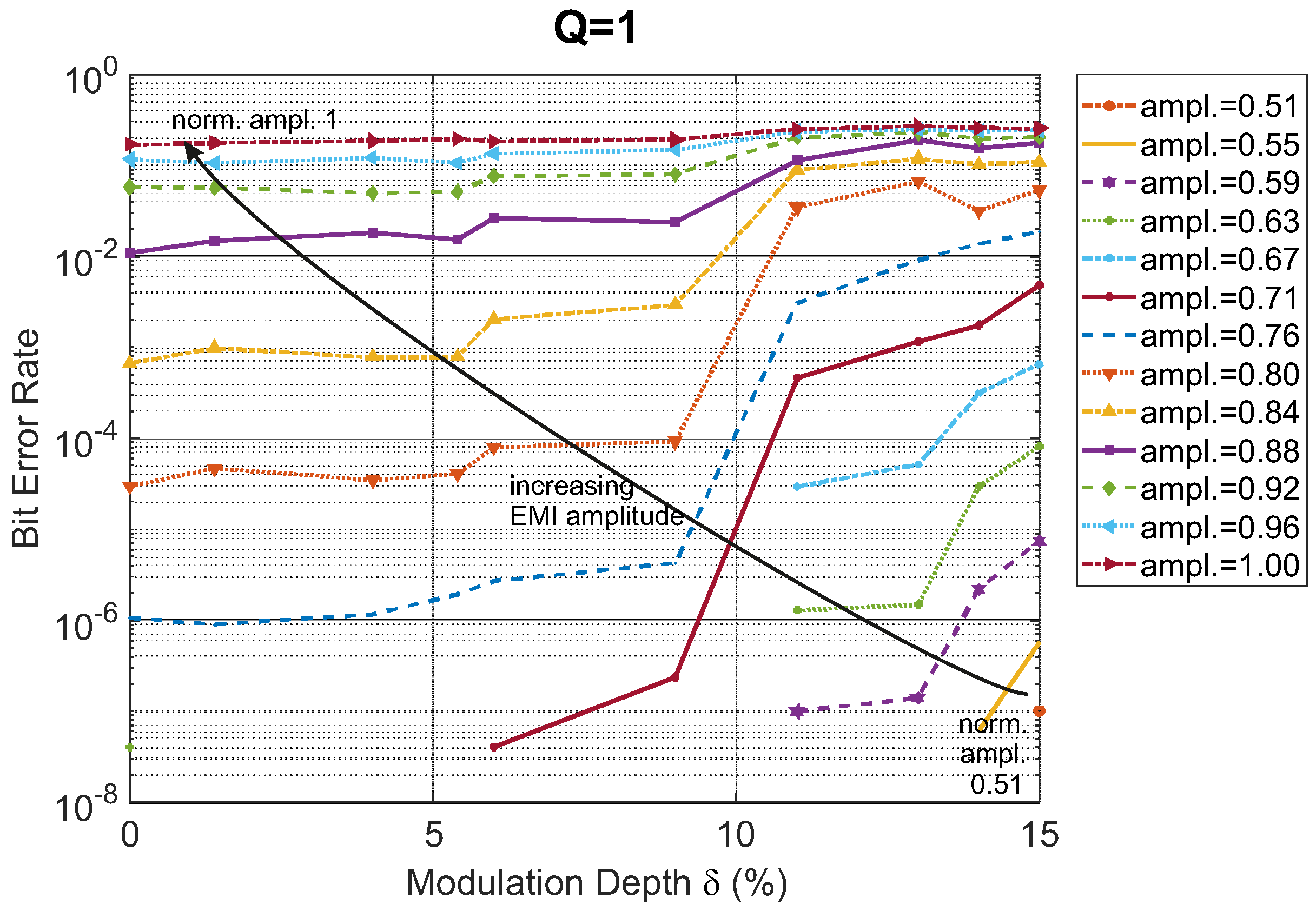

© 2020 by the authors. Licensee MDPI, Basel, Switzerland. This article is an open access article distributed under the terms and conditions of the Creative Commons Attribution (CC BY) license (http://creativecommons.org/licenses/by/4.0/).
Share and Cite
Crovetti, P.S.; Musolino, F. Interference of Spread-Spectrum EMI and Digital Data Links under Narrowband Resonant Coupling. Electronics 2020, 9, 60. https://doi.org/10.3390/electronics9010060
Crovetti PS, Musolino F. Interference of Spread-Spectrum EMI and Digital Data Links under Narrowband Resonant Coupling. Electronics. 2020; 9(1):60. https://doi.org/10.3390/electronics9010060
Chicago/Turabian StyleCrovetti, Paolo Stefano, and Francesco Musolino. 2020. "Interference of Spread-Spectrum EMI and Digital Data Links under Narrowband Resonant Coupling" Electronics 9, no. 1: 60. https://doi.org/10.3390/electronics9010060
APA StyleCrovetti, P. S., & Musolino, F. (2020). Interference of Spread-Spectrum EMI and Digital Data Links under Narrowband Resonant Coupling. Electronics, 9(1), 60. https://doi.org/10.3390/electronics9010060





